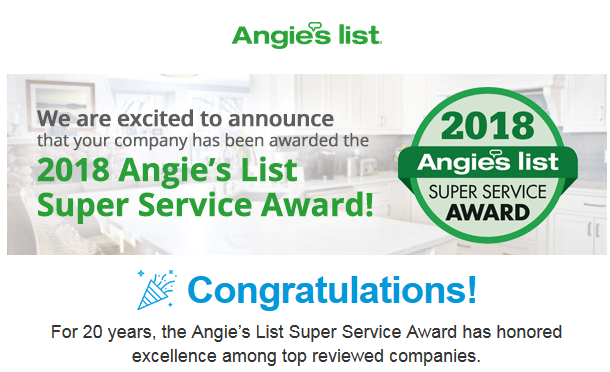
Answers to The Top 5 Questions About Water Softeners
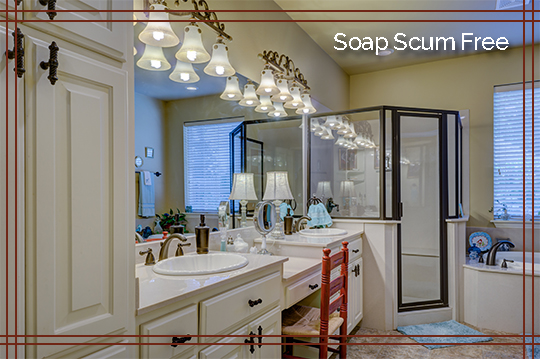
There are many questions that people have when contemplating the installation of a water softening or filtration unit in their home. Professional water treatment specialists such as the professionals at Reynolds Water Conditioning can help. Below you will find the top questions we receive on a regular basis when clients are considering treating their homes water supply.
What is Hard Water?
Hard water is water that contains more than 1 grain per gallon of minerals that include magnesium, manganese, calcium, and magnesium carbonate. Our professionals can test the water in your home to determine if you have hard water or if there is another issue affecting your homes water supply.
Should I Have Concerns About Hard Water?
Hard water can affect your home in a number of ways, in particular the fixtures and plumbing fixtures. Heat dissolves the minerals in hard water which causes the minerals to re-crystalize and create what is known as scale. Scale affects all appliance that use running water and reduces their life space. This can include your homes water heater, dishwasher, washing machine, ice maker, water dispenser, and more.
Another common concern that comes from hard water is the soap scum that builds up in your showers. The combination of soap and hard water forms a scummy substance that deposits on your shower and also your skin. Even after rinsing really well, hard water can leave soap residue to build up on your skin thus leading to skin irritation.
Should I Soften My Water?
Of course, softening your water, like any decision around your home is a personal decision. Hard water does have obvious affects on your home as stated above. If you choose to soften your hard water with the use of a water softener, you will find yourself using less soap, less detergent, and fewer chemicals overall. You will notice that you no longer have to work so to get your dishes and clothes clean. A water softener will also reduce the scale build up on glasses and dishes as well as on faucets, fixtures, and plumbing.
Are There Any Reasons I Would Not Want to Use a Water Softener?
There are two types of water softeners: those that use salt to regenerate and those that use potassium chloride. If you need a low sodium diet it is important to consider the options in water treatment. When people are talking about water softeners, they are often talking about using water softeners that use salt.
Why Do Water Softeners Add Salt to Soften Water?
Water softeners use salt ions that attract hard minerals in water including magnesium and calcium ions, and then depositing them on water softener resin. Salt ions trade places with mineral ions which is why the water from the water softener contains more salt than “normal” tap water. There is about an extra 150 to 300 milligrams per quart of water which works out to about the same amount that you would find in a slice of bread.
The experts at Reynolds Water Conditioning have a solution to your homes unique water quality needs including: arsenic, bacteria, chlorine, rotten egg smell, fluoride, hard water, iron, lead, acid, tannins, radon, and more. More information on our water treatment solutions including water softeners and conditioners, water filtration and purification, reverse osmosis drinking water, and iron & odor removal can be found online at https://reynoldswater.com.
What You Need To Know Before Purchasing a Water Treatment System
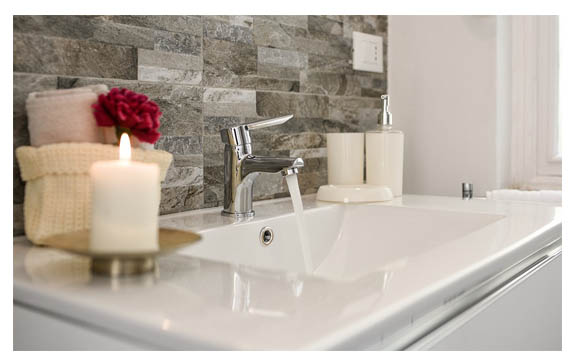
First things first, have the water in your home tested by professional water treatment specialist. Take labeled water samples from each faucet in your home in for treatment. Believe it or not water from the kitchen sink may not test for the same contaminants as the water in the bathroom or laundry room. This could happen for a number of reasons but is important to ensure proper treatment of the water in your home. Processing different points of access will also allow you to recognize issues that can be corrected with whole house water treatment systems such as water softeners or point of use water treatment solutions such as reverse osmosis and water filtration systems.
If the water in your home tests positive for contaminants, then the installation of a treatment system could be the next necessary step in remedying the issue. When you have to install a water treatment solution it is important that you understand these systems will require routine maintenance and care. It is crucial that homeowners understand that containment free water requires effort on the part of the homeowner no matter water treatment solution is installed. Water filtration systems will need new filters installed, water softeners will require the input of salt or potassium chloride, and reverse osmosis systems will require cleaning of existing filters and new filters.
It is important for consumers to be smart when having their water tested. Some man-made chemicals that have been found in the water supply of homes have been associated with serious health problems. These contaminates are not always found in without special analysis. If you suspect the results of your water tests are inaccurate then it is important to have the water tested more thoroughly by a state certified laboratory. Most general water treatment companies can see basic water quality components such as water hardness, pH, arsenic, iron, and sulfur.
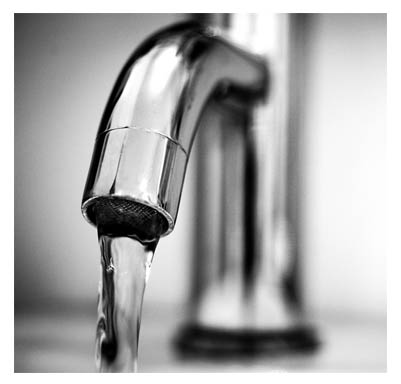
After you are sure the results of your homes water are accurate and have been analyzed to your satisfaction the levels that have been detected will tell you what type and level of water treatment is needed.
Once this process has been satisfactorily completed the next step is to choose a system to treat your homes water. Depending on your water analysis you can determine if you need whole house treatment, point of use treatment, or both. Choose products that come from companies that can offer an established reputation and can offer referrals. Often times companies that sell water treatment systems such as reverse osmosis, iron filtration, water softeners and conditioners will also offer service plans, maintenance options, and salt and potassium chloride delivery.
The experts at Reynolds Water Conditioning have a solution to your homes unique water quality needs including: arsenic, bacteria, chlorine, rotten egg smell, fluoride, hard water, iron, lead, acid, tannins, radon, and more. More information on our water treatment solutions including water softeners and conditioners, water filtration and purification, reverse osmosis drinking water, and iron & odor removal can be found online at https://reynoldswater.com.
How to Make Softened Water Drinkable – Too Much Sodium?

How to Make Softened Water Drinkable
(Newswire.net — January 3, 2019) — Altering the hardness of water might make it undrinkable, and this is mostly due to the fact that the ion exchange principle used to strip hard water of its minerals results in a spike in sodium levels. Calcium and magnesium ions all get replaced with sodium, so you find that soft water has a considerably high sodium content. So are you looking for ways on how to make softened water drinkable? This article will go into detail about all of the key points revolving around softened water and how you can ensure that you’re not drinking too much sodium.
Making Softened Water Drinkable
Sodium is a mineral we need to have in our diets. Though sodium chloride—otherwise known as table salt—is probably our biggest source of the mineral, it occurs naturally in other foods we eat. It is a vital component in certain cell functions, so having sodium in our diets is necessary for good health.
Sodium chloride is only about 40% sodium. In small or appropriate quantities, sodium is not harmful to us, but when too much sodium is present in the body, problems begin to manifest. Heart disease and high blood pressure cases have already been linked to high sodium levels in the blood, and as a result, the Water Quality Regulatory board restricts the ingestion of water with a sodium content higher than 200 mg/liter.
How Do You Ensure Softened Water is Drinkable?
First of all, it is important to note that water exists in various degrees of hardness. The harder the water is, the more minerals (calcium and magnesium) it contains, and the more sodium is produced during the ion exchange process. Softening water that is very hard will likely lead to high sodium levels.
Typically, water softeners add 46 mg/ liter of sodium for every 100 mg/liter of hardness minerals present in the water. Therefore, a softener will produce 184 mg/liter of sodium in water that contains 400 mg/liter of calcium carbonate, and that’s rather high.
To reduce water hardness, some people use osmosis water filters, which eliminate most of the minerals present in hard water. This way, the sodium levels remain low even after the softening process. Too much sodium is bad for our health, but how much is too much?
The average human being consumes 3240 mg of sodium on a daily basis—8.1 grams of salt, all of which comes from food, beverages, and water too. Water that contains 400 mg of calcium carbonate per liter is considered very hard, and using water softener will cause sodium levels to go beyond the recommended daily amount. Some places have predominantly hard water sources, and in such places, using a water softener outright is not a reliable way to make drinking water with a suitable sodium content.
Other Ways to Get Clean Drinking Water
If softening water in your region causes it to have higher than average sodium levels, you can drink it the way it is. Although if you’re looking for a way on how to make softened water drinkable, water softening experts at Clear Water Concepts mention that you should consider a hard water tap or reverse osmosis system can be just as ideal a source of drinking water provided you install filters for debris and bacterial contaminants. In some areas, drinking unsoftened water is mandatory as the alternative poses health risks due to high sodium levels. You can consult your local water company to learn about the hardness of the water in your region, and whether it is safe to drink softened water.
Bottom Line
Water is usually undrinkable due to its hardness level. That’s why many people have opted to implement water softeners in their home where the calcium and magnesium in the hard water gets replaced with sodium ions. Since soft water does have a decent amount of sodium in it, many people are skeptical of whether it’s drinkable or not. This article went over how to make softened water drinkable by using a hard water tap or reverse osmosis system to ensure that softened water is safe to drink.
Original Source: https://newswire.net/newsroom/blog-post/00106748-how-to-make-softened-water-drinkable.html
Original Date: Jan 3 2019
Manta Rays May Lead Us to Better Water Filtration
Most water filters work by a sieve principle, in which waterborne particles that are too large to pass through a filtration membrane’s pores end up collecting on its surface. The problem is, such filters ultimately get clogged with trapped particles. The manta ray, however, has developed a work-around that could be applied to human technology.
Although manta rays may be big and weird-looking, they’re harmless to humans. They feed entirely on plankton and microcrustaceans which they filter out of seawater.
It was already known that filter-feeding fish generally do so by gulping water into their mouths, then forcing it out through their gills. On its way out, the water passes through closely-spaced rows of hook-lined appendages known as gill rakers – plankton too large to pass through the gaps between the hooks get trapped, and are subsequently swallowed.
Scientists from Oregon State University, however, recently noticed that manta rays have uniquely modified gill rakers which take the form of long, parallel arrays of leaf-like lobes (see the photo below). As expelled water flows through them, it forms into swirling eddies which cause plankton to ricochet off the lobes and back into the mouth cavity.
Essentially, the modified rakers form a filter that repels particles instead of trapping them. Not only does this mean that the system is very resistant to clogging and can operate at high flow rates, but it also allows the animals to retain prey that’s much smaller than the gaps in the rakers.
“We are currently looking at whether we can adapt this mechanism for engineered systems,” says assistant professor Jim Strother, co-author of a paper on the study. “For example, one future direction is exploring whether this can be applied to wastewater treatment in order to address the emerging threat from microplastics pollution.”
Original source: https://newatlas.com/manta-ray-water-filtration/56550/
Original Date: Sept 27 2018
Written by: Ben Coxworth
Common Signs You Home Needs a Water Softener

There are a number of signs that point to a problem with hard water. Homeowners with hard drinking water will often notice a smell or taste that is off. When hard water is present in your home often times the sinks, tubs, and toilets will be stained, family members may begin to complain of dry, itchy skin, and your water supply will smell and taste off. Bringing in a sample of the homes water will allow you to know exactly what is going on in your water supply. This water analysis will tell you what type of water treatment system will best suit your homes water issue.
Water softeners are used to remove excess calcium and magnesium ions and exchange them with either sodium or potassium ions, depending on if you choose a salt free water softener or water softener that uses salt. When the exchange has taken place the water softener regenerates and flushes the system of extra ions until it has been completely recharged with new sodium or potassium ions. This process uses twenty-five gallons of water each day, depending on use. It is important to determine the waters hardness. Preventing the buildup of scale can increase the lifespan of your appliances like your water heaters, dishwasher, and more. There are seven common signs that your home will benefit from the installation of a whole house water softener.
Noticeable Scale Buildup on Appliances
If you are noticing scale, you more likely than not have hard water. Noticeable scale build up will be seen in the form of mineral deposits on coffee pots, tea kettles, and such. These same mineral deposits are being built up within your homes pipes as well. To prevent clogged pipes and less effective passing of water through your system causing defective plumbing and increased scale buildup a water softener should be installed. The water softener needs to be set in a manner that allows the proper amount of water to rejuvenate each day to avoid running out of soft water throughout the day. If you use twenty-five gallons of water each day, then your water softener needs to supply twenty-five gallons of soft water.
The visible buildup that homeowners are seeing is known as limescale. This is a hard, chalky material that is formed from a combination of calcium and magnesium bicarbonate. The salt is what forms the white chalk like substance that is visible. A water softener will reduce this scale buildup through ion exchange technology.
Itchy, Dry Skin and Hair
Hard water contains more calcium and magnesium salt than soft water. When hard water is used in daily life it can cause your skin and hair to dry out no matter what shampoo and lotion you are using. The hard water is not providing any nourishment to your skin and hair, so it dries out. The extra minerals, calcium and magnesium, remain on your skin. It is important to note that soap doesn’t dissolve well in hard water, so it doesn’t help to remove the build up of minerals. Since soap doesn’t dissolve well either that residue is also known to irritate the area as well.
Hard water is also harsh on even the most stringent of skin care regimens. Hard water blocks the pores in your skin, causes inflammation, and creates an environment prone to black heads. Leathery, dry skin is another common side effect of hard water.
Gray and Faded Clothes
When darker clothes, sheets, and towels start to fade and gray when washed using hard water. The hard water may also change the texture of the fabrics. The fabrics will start to become scratchy overtime because of the additional minerals that are contained in hard water.
Sinks, Bathtubs, and Toilet Stains
Often times when a home has hard water it is noticeable because of the stains that the mineral residue leaves behind in sinks, tubs, and toilets. The stains are formed after water evaporates and leaves behind the large amounts of calcium and magnesium from the tap water. The residue will feel plaster like. These deposits can also form on faucets.
One way in which to remove the residue build up is with vinegar. Put vinegar into a spray bottle and spray the buildup or residue with vinegar. After letting it set for a minute it should wipe away without a ton of struggle. For harder to remove residue let the vinegar soak for up to an hour. To clean the residue buildup from your dishwasher, pour a cup of bleach into the dishwasher along with a cup of powdered detergent. Run this mixture through an empty dishwasher. After the cycle has finished up run the dishwasher once again with an empty load using a cup of vinegar. This will help to ensure that the bleach is no longer present.
Both types of water softeners, salt and potassium chloride, are effective in softening your homes water to prevent future residue buildup from making a home in your home. To determine your homes water softener needs, have the water in your home tested. This water analysis will help to determine the level of extra minerals in the water and the settings that will be optimal once your water softener is installed.
Constant Plumbing Repairs
The plumbing in your home, especially steel pipes, are easily harmed from the buildup of limescale which will prevent the water from flowing freely through them. PVC and Copper piping tend prevent the buildup of hard water minerals better than steel however, all plumbing will eventually be affected by limescale. More limescale means thicker buildup in the plumbing and will eventually lead to the loss of water pressure. The rate at which the pipes are affected will be quicker overtime as the space within the pipe circumference shrinks due to the additional limescale.
If left untreated the pipes will eventually fail. Homeowners that don’t take regular care to clean up the build up from around faucets will eventually end up with valves that don’t fully shut and therefore leak. This leak will lead to greater, faster limescale buildup. Plumbing repairs can be expensive as well as causing a lot of excessive wear on the house. Installing an appropriate water softening unit will work wonders in helping to prevent further plumbing issues.
Increases in Water Bills
The amount of water that you use will increase the harder pipes have to work to get the water to flow through. If there is a sudden increase in your water bill have your water tested. This analysis will determine if you need a water softener installed, need your water softener replaced, or the water hardness level of a currently installed system needs to be adjusted.
If you notice a change in your water the first step should always be to have your water analyzed by a professional. Once an analysis is done on your water and you know what minerals are contained in the water a water treatment solution can be recommended. Sometimes the simple installation of a water softener can improve the overall quality of your homes water however sometimes the solution is more complex. A wide range of water treatment systems are available from whole house to point of use water softeners, water filters and purifiers, and reverse osmosis systems, all with their own specific job.
The experts at Reynolds Water Conditioning have a solution to your homes unique water quality needs including: arsenic, bacteria, chlorine, rotten egg smell, fluoride, hard water, iron, lead, acid, tannins, radon, and more. More information on our water treatment solutions including water softeners and conditioners, water filtration and purification, reverse osmosis drinking water, and iron & odor removal can be found online at https://reynoldswater.com.
Dr. Roach: Forget Bottled Water, Tap Water is Better
Bottled and purified water sales have increased over the years. I often see advertisements showing filters attached to faucets that “take out all impurities.” My parents had a water softener, and my father, professionally involved in weight-bearing physical activity, experienced demineralization of his skeleton and a broken hip. It has been suggested that the water softener took minerals, including calcium, out of the water that my parents used to cook and drink. I drink tap water, but is a large percentage of the U.S. population headed for demineralization and malnutrition because they drink only “purified” water?
Most water softeners work by exchanging sodium for the “hard” minerals, especially magnesium and calcium, present in most tap water, to greater or lesser extent.
If the water in your area is naturally very hard, then a significant amount of sodium may be added, and calcium and magnesium removed. However, this is very rarely a problem, and almost certainly had nothing to do with why your father had a hip fracture.
We get our minerals mostly from food, not from water. The major risk factors for osteoporosis in men are smoking, alcohol, low testosterone levels and low vitamin D, although there are many other causes.
I don’t recommend bottled water or water purifiers because in most of the United States and Canada, the water quality is excellent. Bottled water is 1,000 times more expensive than tap water where I live. I have been to places where the tap water doesn’t taste so good, in which case I would recommend a filter over bottled water.
Original Source: http://www.agrinews-pubs.com/lifestyle/dr-roach-forget-bottled-water-tap-water-is-better/article_96cfbffa-8f89-537e-9779-7974253bcdf8.html
Original Date: Dec 17 2018
Written By: Keith Roach
Keith Roach
Keith Roach
Help! What Water Treatment System Do I Need?
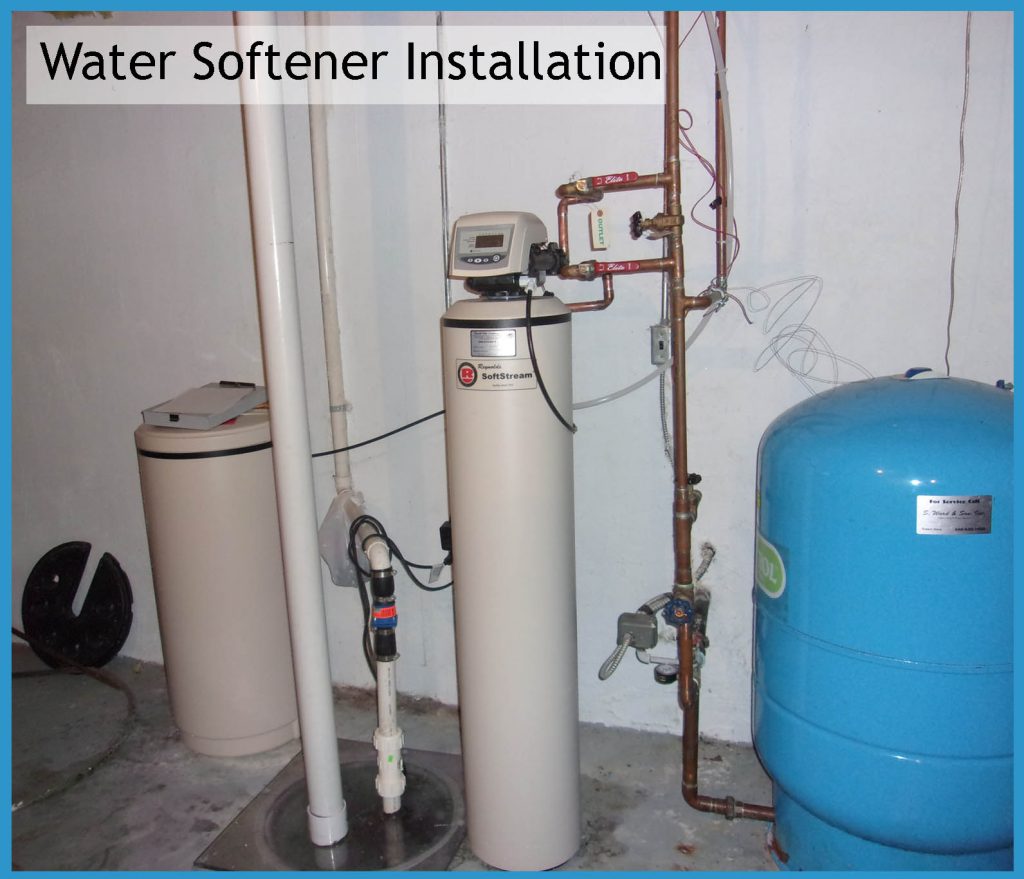
There is a lot of confusion surrounding the best water treatment solution for your homes water. There are major differences between water filters, water purifiers, and water softeners. Many consumers use these terms interchangeably and believe they perform similar process however this is not the case.
Each of these water treatment options has its own process and removes completely different impurities within your homes water. If your goal is to have cleaner drinking water that is free of lead, chlorine, and other impurities should understand that a water softener does not meet this goal. Instead water softeners are meant to remove scale buildup from water.
Before comparing filters, purifiers, and softeners it is important to know what we are using them for; what is it that we want to remove from the water? Natural water picks up chemicals compounds, minerals, and impurities get picked up along the way. Calcium, magnesium, chlorine, pesticides,herbicides, waste, bacteria, and even viruses can be picked up by your homes water as it travels into your home and out through your faucets.
These impurities should be removed from your homes water supply before it is utilized for drinking and cooking as if ingested can present issues to one’s health. Water filters and water purification systems can help remove the impurities mentioned above. Other items, unrelated to the health of your water can also build up in the water supply and if left untreated can present problems with buildup in your homes plumbing as well as reducing the lifespan of your appliances. The minerals that allow scale to build up are only removed with the usage of a whole house water softener.
What is a water filter?
Water filters can be installed to treat water at the point of use or to filter water throughout the house. A filter can be used to remove and/or reduce impurities like chlorine,lead, chromium, copper, nickel, and more. Water filters also help to inhibit the growth of algae, fungi, and bacteria in water although should not be considered the end all solution for these water impurities.
What are water purifiers?
Water purification systems help to fully remove the bacteria and viruses in the water. Purifiers do not remove chemical contaminants like water filters do however when used in conjunction with one another they prevent chemical and natural chemicals from ending up in your homes drinking water or water supply in general if installed to purify and filter the water throughout the whole house.
What is a water softener?
There are two types of water softeners: one that uses salt and one that uses potassium chloride. Although two very different systems they do offer the same solution in that they remove the minerals and impurities in the water that create build up in your homes plumbing. Water softeners don’t target the contaminants in water or even make it safer to drink however they do filter out the ick in water that results in appliances running inefficiently and help to prolong the longevity of your homes plumbing, appliances, and such.
Before you purchase a water treatment option it is important to have your water tested by a professional water treatment expert. They will help to pinpoint the type of water system that you need for your exact problem. Some water may use a combination of treatments while some water issues may be addressed with just one option. In the most problematic water systems it may be necessary to install all three systems to work in conjunction with one another.
The experts at Reynolds Water Conditioning have a solution to your homes unique water quality needs including: arsenic, bacteria,chlorine, rotten egg smell, fluoride, hard water, iron, lead, acid, tannins, radon, and more. More information on our water treatment solutions including water softeners and conditioners, water filtration and purification, reverse osmosis drinking water, and iron &odor removal can be found online at https://reynoldswater.com.
Is All Well With Your Drinking Water?

MONDAY, Dec. 3, 2018 (HealthDay News) — More than 15 million homes in the United States get their water from private wells, according to federal estimates.
While the U.S. Environmental Protection Agency regulates public drinking water, people with private wells need to check their water themselves, along with other maintenance steps.
This is especially important if you’re thinking about having a baby. Many studies over the past 15 years have found a greater risk of birth defects in babies whose mothers drank well water with concentrations of certain contaminants.
You can’t rely on how your water looks coming out of the faucet to evaluate its safety. That’s because dangerous contaminants don’t always affect color or smell. One example is nitrate, a chemical found in many fertilizers that can leech into the water table. It’s long been linked to birth defects like limb deformities and cleft palates.
A 2016 study done at the Texas A&M Health Science Center School of Public Health and published in the journal Current Environmental Health Reports linked two other common substances to birth defects: atrazine and arsenic. Atrazine is an herbicide that can get into soil and groundwater. Arsenic most often leeches into water naturally, from bedrock, but that doesn’t make it less dangerous.
Various types of birth defects have been seen when two or more of these contaminants are present at the same time.
If a private well is your primary source of drinking water, ask your local health department how to find a water testing facility near you, or call the EPA Safe Drinking Water Hotline at 1-800-426-4791.
Original source: https://consumer.healthday.com/vitamins-and-nutrition-information-27/water-consumption-health-news-701/is-all-well-with-your-drinking-water-738886.html
Written By: Len Canter
Published Date: Dec 3 2018
New Alloy to Solve Lead Problem in Drinking Water

Material scientists at UNSW Sydney have come up with a lead-free brass alloy to replace traditional plumbing brass materials that have been shown to leach lead into drinking water.
The breakthrough alloy, which the group has named ‘bright brass’, has been designed to retain all the advantages that lead provides to brass for its manufacturing but without the toxicity.
Dr. Kevin Laws from the UNSW School of Materials Science and Engineering says he and his research group had developed a ‘high-entropy’ alloy system very similar to brass and bronze in 2014. And with the growing concern about lead from brass fittings dissolving in household drinking water, the researchers turned their attention to creating a lead-free brass alloy.
“Developing a viable alternative to standard plumbing fixtures and hardware became a high priority, particularly when it became known how widespread lead contamination in New South Wales drinking water is – with reports that 56 per cent of households in NSW are contaminated,” Dr. Laws said.
“Not only is this an issue for Australian health but also the nation’s IQ as lead has an impact on intelligence.”
A 2016 Macquarie University study that tested samples of drinking water extrapolated that 56 per cent of Australian households have drinking water containing lead, while eight per cent exceeded the limit of 10 micrograms per litre set in the Australian Drinking Water Guidelines.
Low level lead poisoning has been associated with reductions in IQ, poor attention spans and aggressive behaviour among children.
The UNSW researchers, who created a company called Advanced Alloy Holdings to commercialise its alloy system, needed to find a replacement for lead in brass fittings without losing its main advantages. Up until now, lead has played an important role in how brass plumbing parts are manufactured.
“The lead forms tiny globules, like oil in water, which can be seen under the microscope,” Dr. Laws said.
“These globules provide lubrication, just like lead in leaded petrol, which helps with ‘free machining’ and associated manufacturing processes, as well as helping the brass to seal once in service.”
With a view to developing lead-free brass with similar lubricating particles, Advanced Alloy Holdings was provided with a $15,000 Techvoucher grant from the NSW Government’s Boosting Business Innovation Program to conduct a research project with UNSW. Dr. Warren McKenzie, CEO of Advanced Alloy Holdings, said the project was a working success.
“Within a few months, the UNSW team delivered an alloy which can be made by existing manufacturers to solve a water contamination problem that has affected Australians for more than a century,” Dr. McKenzie said.

The key to the discovery was that the new particles to replace lead – still under wraps by the team while the final products are being developed – meet all these criteria.
“This project has been successful achieving a proof-of-concept thanks to the support of the Boost program,” Dr. Laws said.
“We have successfully cast bright brass that includes safe, lubricating particles that form as the alloy cools down after casting. Our new alloys are silver in colour to allow for better identification for these lead-free applications. They are cost-competitive and perform mechanically similarly, if not better, than leaded brass.”
NSW Deputy Premier and Minister for Small Business John Barilaro said the project was an example of how the NSW Government’s $18 million Boosting Business Innovation Program was bringing great business and academic minds together to create new products and ideas.
“It’s all about entrepreneurs tapping into top-notch research provided by the university sector,” Mr Barilaro said.
“As a government we want to be doing everything we can to create the right environment for people to have the confidence to launch a business idea, and then get the support they need to make sure it succeeds.
“I look forward to seeing the potential contribution this product could make to improving the lives of people living in NSW,” he said.
Dr. Laws says the last stage of the project is to complete machining and manufacturing trials to see exactly how much better they perform.
He says that such is the extent of the leaded brass in Australian plumbing systems, that change to safer components will be a long and slow process.
“There is no legislation in Australia which bans the use of lead in brass fittings, with standards allowing up to 4.5 per cent lead content in brass alloys used in plumbing, while the US and Canada limit its composition to 0.25 per cent, some 18 times smaller,” Dr. Laws said.
“The solution is not just replacing taps, but the entire aging plumbing network leading to your home. New legislation will only prevent extra lead being added to the network or as town-water infrastructure is upgraded to lead-free.”
Dr. Laws thinks the bright brass products may be available in a year once the R&D process is complete. Already, the company has been approached by others who are watching the lead-free plumbing space with interest.
Original Source: https://phys.org/news/2018-11-alloy-problem.html
Original Date: Nov 29 2018
Written By: Lachlan Gilbert
